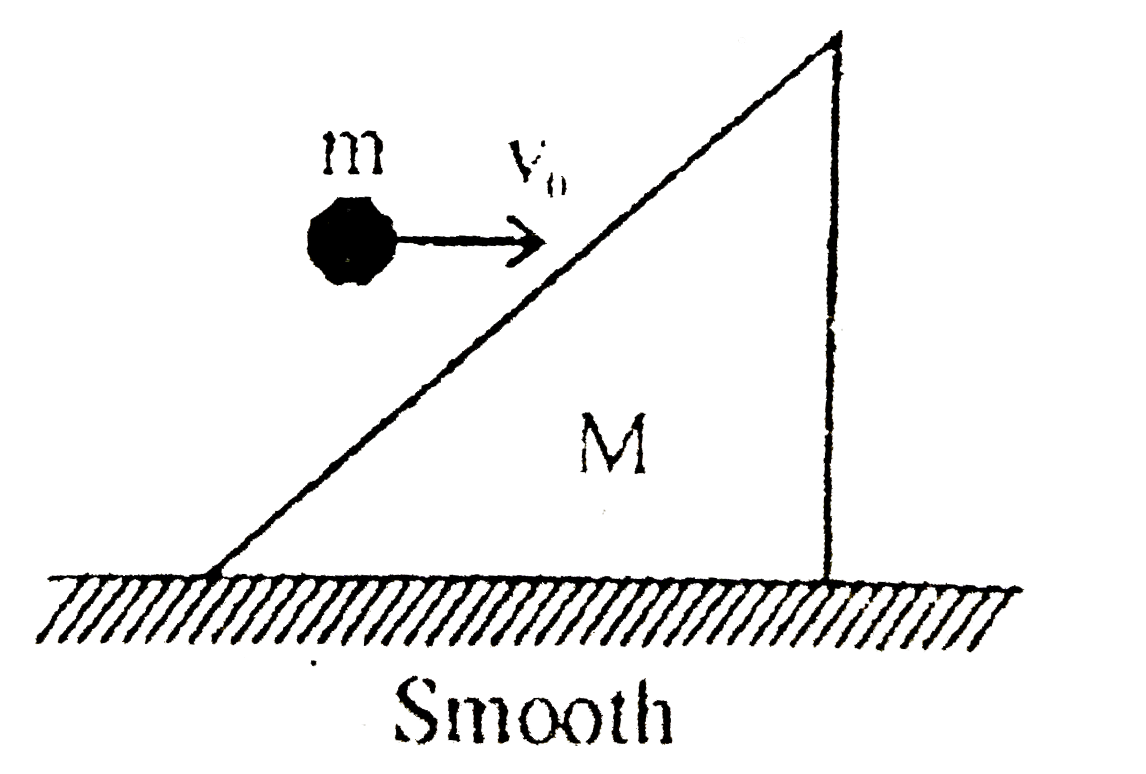Statement -1: Two particles moving in the same direction do not lose all their energy in a completely inelastic collision.
Statement -2 : Principle of conservation of momentum holds true for all kinds of collisions.
Both Assertion and Reason are correct, Reason is the coreect expianation of Assertion
Bioth Assertion and Reason are Correct but Reason is not the correct expalnation of Assertion
Assetion is correct and Reason is incorrect
Assertion is incorrect and Reason is correct
The correct Answer is:D
Step by step video & image solution for Statement -1: Two particles moving in the same direction do not lose all their energy in a completely inelastic collision. Statement -2 : Principle of conservation of momentum holds true for all kinds of collisions. by Physics experts to help you in doubts & scoring excellent marks in Class 11 exams.
Updated on:21/07/2023Topper's Solved these Questions
- SOLVD PAPERS 2017 NEET, AIIMS & JIPMERBOOK - DC PANDEY ENGLISHCHAPTER - SOLVD PAPERS 2017 NEET, AIIMS & JIPMEREXERCISE - Solved paper 2018(JIPMER)
38 Videos
- SOLVD PAPERS 2017 NEET, AIIMS & JIPMERBOOK - DC PANDEY ENGLISHCHAPTER - SOLVD PAPERS 2017 NEET, AIIMS & JIPMEREXERCISE - Solved paper 2018(NEET)
22 Videos
- SIMPLE HARMONIC MOTIONBOOK - DC PANDEY ENGLISHCHAPTER - SIMPLE HARMONIC MOTIONEXERCISE - Integer type questions
14 Videos
- SOUND WAVESBOOK - DC PANDEY ENGLISHCHAPTER - SOUND WAVESEXERCISE - Exercise 19.7
4 Videos
Similar Questions
Statement-1: kinetic energy of SHM at mean position is equal to potential energy at ends for a particle moving in SHM.
Statement-2: Total energy in SHM is conserved.
View SolutionStatement-1 : In an elastic collision in one dimension between two bodies, total momentum remains the same before, during and after the collision.
Statement-2 : In an elastic collision in one dimension between two bodies, total kinetic energy remains the same before, during and after the collision.
View SolutionTwo identical vehicles are moving with same velocity v towards an intersection as shown in figure. If the collision is completely inelastic, then

View SolutionAssertion: Two bodies moving in opposite directions with same magnitude of linear momentum collide each other. Then, after collision both the bodies will come to rest.
Reason: Linear momentum of the system of bodies is zero.
View SolutionStatement-1 : A particle of mass m strikes a smooth wedge of mass M as shown in the figure. Linear momentum of particles along the inclined surface of wedge is conserved during collision.

and
Statement-2 : Wege exerts a force on particle perpendicular to inclined face of wedge during collision.
View SolutionA particle is projected from the ground with speed u at angle 60∘ from horizontal. It collides with a second particle of same mass moving with horizontal speed u in same direction at highest point of its trajectory. If collision is perfectly inelastic then find horizontal distance travelled by them after collision when they reached at ground
View SolutionTwo particles of masses m and 2m moving in opposite directions collide elastically with velocity 2v and v, respectiely. Find their velocities after collision.

View SolutionStatement I: In an elastic collision between two bodies, the relative speed of the bodies after collision is equal to the relative speed before the collision.
Statement II: In an elastic collision, the linear momentum of the system is conserved.
View SolutionA particle of mass m moving in the x direction with speed 2v is hit by another particle of mass 2m moving in they y direction with speed v. If the collision is perfectly inelastic, the percentage loss in the energy during the collision is close to :
View SolutionAnwer carefully, with reasons:
a) In an elastic collision of two billiard balls, is the total kinetic energy conserved during the short time of collision of the balls (i.e. when they are in contact)?
Is the total linear momentum conserved during the short time of an elastic collision of two balls?
c) What are the answers to a) and b) for an inelastic collision?
d) If the potenital energy of two billiard balls depends only on the separation distance between their centers, is the collision elastic or inelastic? (note we are talking here of potential energy corresponding to the force during collision, not gravitational potential energy).
View Solution
